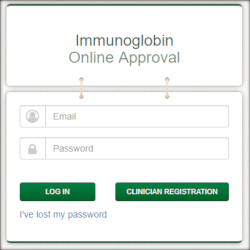Presentation
- 2g (10mL) or 4g (20mL) bottles
- HizentraNZ® is a 20% (20g/100mL) solution of human immunoglobulin (antibodies) prepared from pooled plasma donations made from New Zealand donors for subcutaneous use only.
- For intravenous immunoglobulin, see the IVIG page.
- For intramuscular immunoglobulin, please see Normal Immunoglobulin.
- HizentraNZ replaces Evogam. Please contact an NZBS TMS to discuss HizentraNZ®, if needed.



Australian NBA IVIG Guideline

English NHS IVIG Guideline
Prescription
- Because Hizentra/HizentraNZ is an expensive medication with increasing demand, pre-approval of new patients receiving HizentraNZ/HizentraNZ is required. Please see the guidelines provided on the right and use the Immunoglobulin Approval Online form, also on the right. If urgent, please contact your Blood Bank or the Transfusion Medicine Specialist on call.
ABO Compatibility
- Compatibility is not relevant for manufactured (fractionated) plasma product transfusion.
Storage and Infusion
- HizentraNZ® should be stored in a refrigerator (2-8°C). Do not freeze. Once removed from the refrigerator, store HizentraNZ® below 25°C and use within 2 weeks.
- Use a standard infusion set. A filter is not needed.
- If not used, please return to Blood Bank
- See the Health Care Professionals' Information Brochure for instructions on spiking the bottle.
- Prime the infusion tubing, clean the injection site and insert the needle at a 45° angle into the fatty tissue just below the skin's surface.
- Suitable injection sites include lower abdomen, thighs, upper arms and hips. More than one injection site may be needed per infusion, especially if the volume prescribed exceeds 20mL (3.2g).
Precautions
- Acute renal failure: In patients at risk for acute renal failure, HizentraNZ should be administered subcutaneously at the minimum rate of infusion and dose practicable.
- Passive Transfer of Antibodies and Interference with Serological Testing: After injection of immunoglobulin, the transitory rise of the various passively transferred antibodies in the patient's blood may result in misleading positive results in serological testing.
- Read manufacturer's instructions carefully
- Always observe for turbidity, floating material and sediment
Vaccination
- Inactivated vaccines (e.g. flu, hepatitis B, tetanus, pneumococcal): Inactivated vaccines may be administered concurrently with passive antibody to induce active immunity.
- Live attenuated virus vaccines (e.g. meales, mumps, polio, rubella): Passively acquired antibody can interfere with the response to live, attenuated virus vaccines. Administration of such vaccines should be deferred until approximately three months after passive immunisation. If immunoglobulin is administered within two weeks of vaccination with a live attenuated virus vaccine, the efficacy of the vaccine may be compromised. Consideration should be given to re-vaccination approximately three months (one year for measles) after the immunoglobulin was given.
Rate
- Each bottle should be infused within 4 hours of spiking
- Adult and Paediatric patients:The recommended infusion rate depends on the individual patient’s needs. Device-assisted infusion: The initial infusion rate should not exceed 20 mL/hour/site.
- If well-tolerated, the infusion rate can then gradually be increased to 35 mL/hour/site for the subsequent two infusions.
- Thereafter, the infusion rate can be further increased as per patient’s individual tolerability.
Monitoring
- Recipients should remain under observation for 20 minutes following administration in case they experience an immediate adverse event requiring treatment.
DO NOT
- DO NOT add medications to blood products.
- DO NOT give intravenously. If HizentraNZ® is inadvertently administered into a blood vessel, patients could develop shock.
Dose
- Replacement therapy (for immunodeficiency): adjusted for the individual patient. Typically 0.05 - 0.15 grams HizentraNZ® per kg bodyweight per week. This corresponds to a monthly dose in the range of 0.2-0.6g/kg. This should be adjusted based on IgG trough levels.
More Info